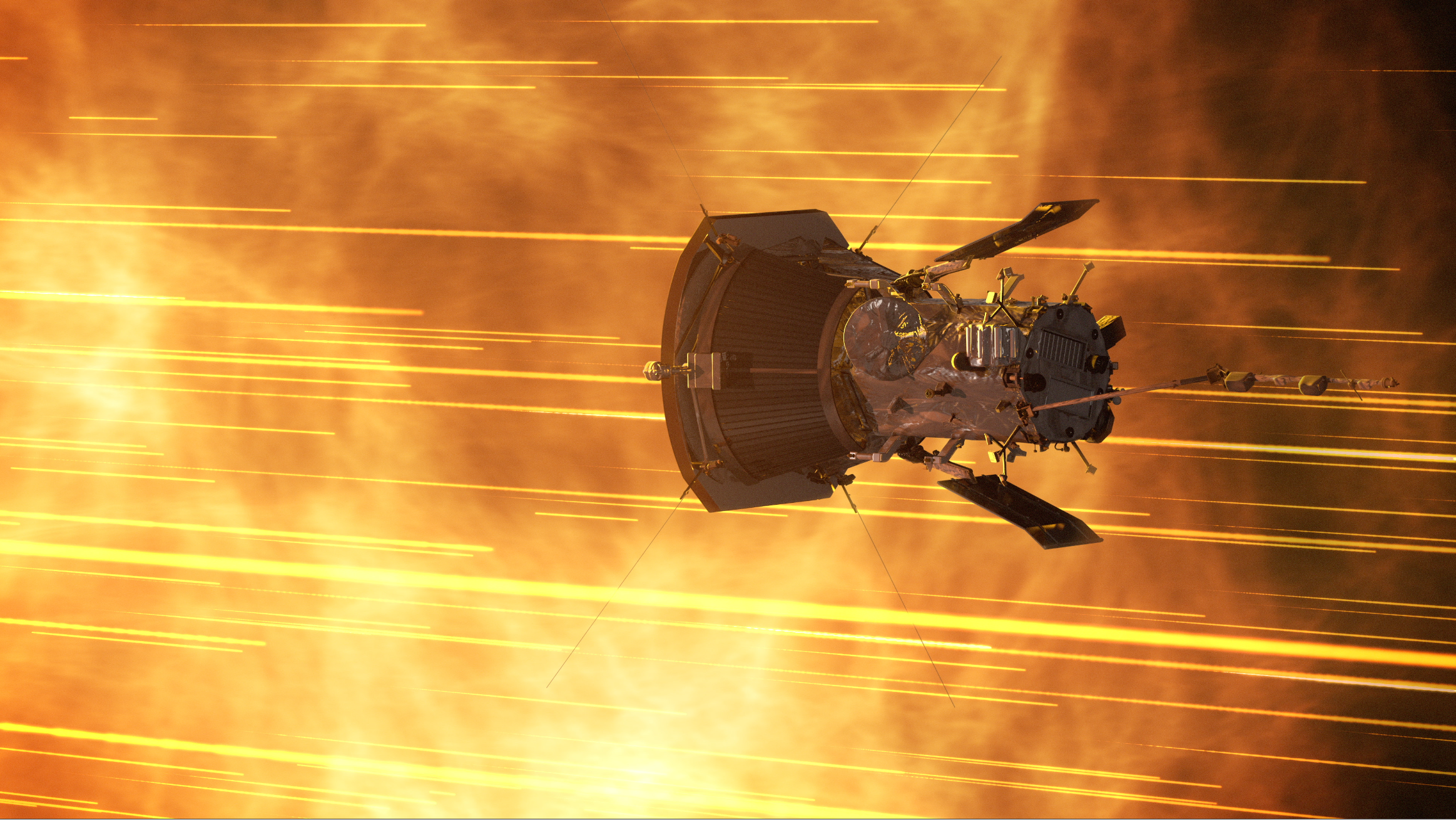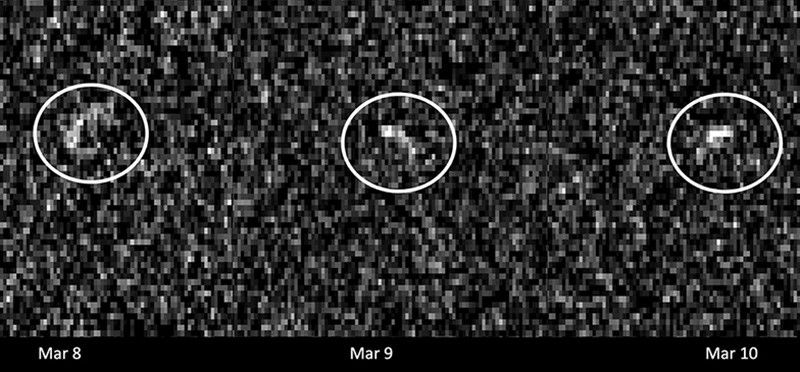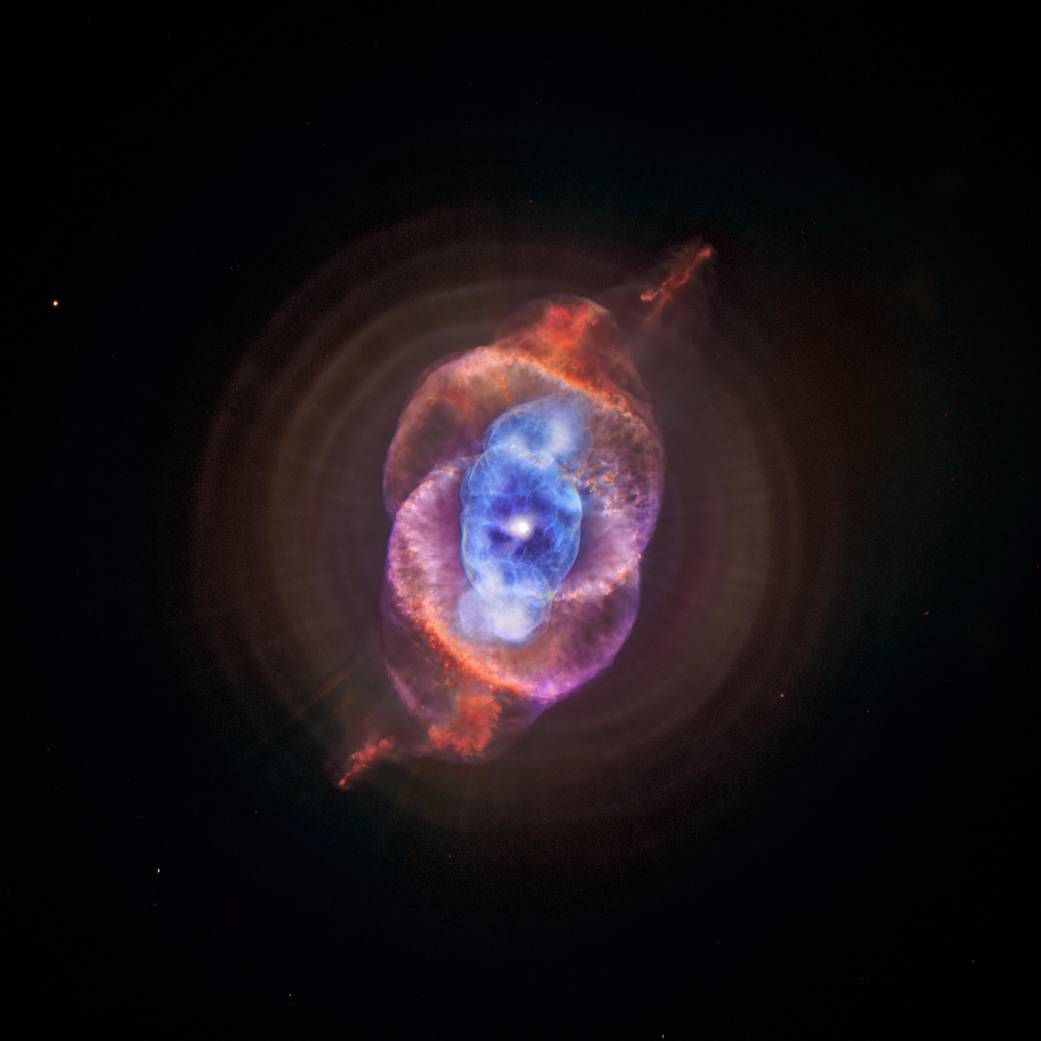This composite of data from NASA’s Chandra X-ray Observatory and Hubble Space Telescope gives astronomers a new look for NGC 6543, better known as the Cat’s Eye nebula. This planetary nebula represents a phase of stellar evolution that our sun may well experience several billion years from now.
When a star like the sun begins to run out of fuel, it becomes a red giant. In this phase, a star sheds some of its outer layers, eventually leaving behind a hot core that collapses to form a dense white dwarf star. A fast wind emanating from the hot core rams into the ejected atmosphere, pushes it outward, and creates the graceful filamentary structures seen with optical telescopes.
In the case of the Cat’s Eye, material shed by the star is flying away at a speed of about 4 million miles per hour. The star itself is expected to collapse to become a white dwarf star in a few million years.Image Credit: X-ray: NASA/CXC/SAO; Optical: NASA/STScI
1 min read




























